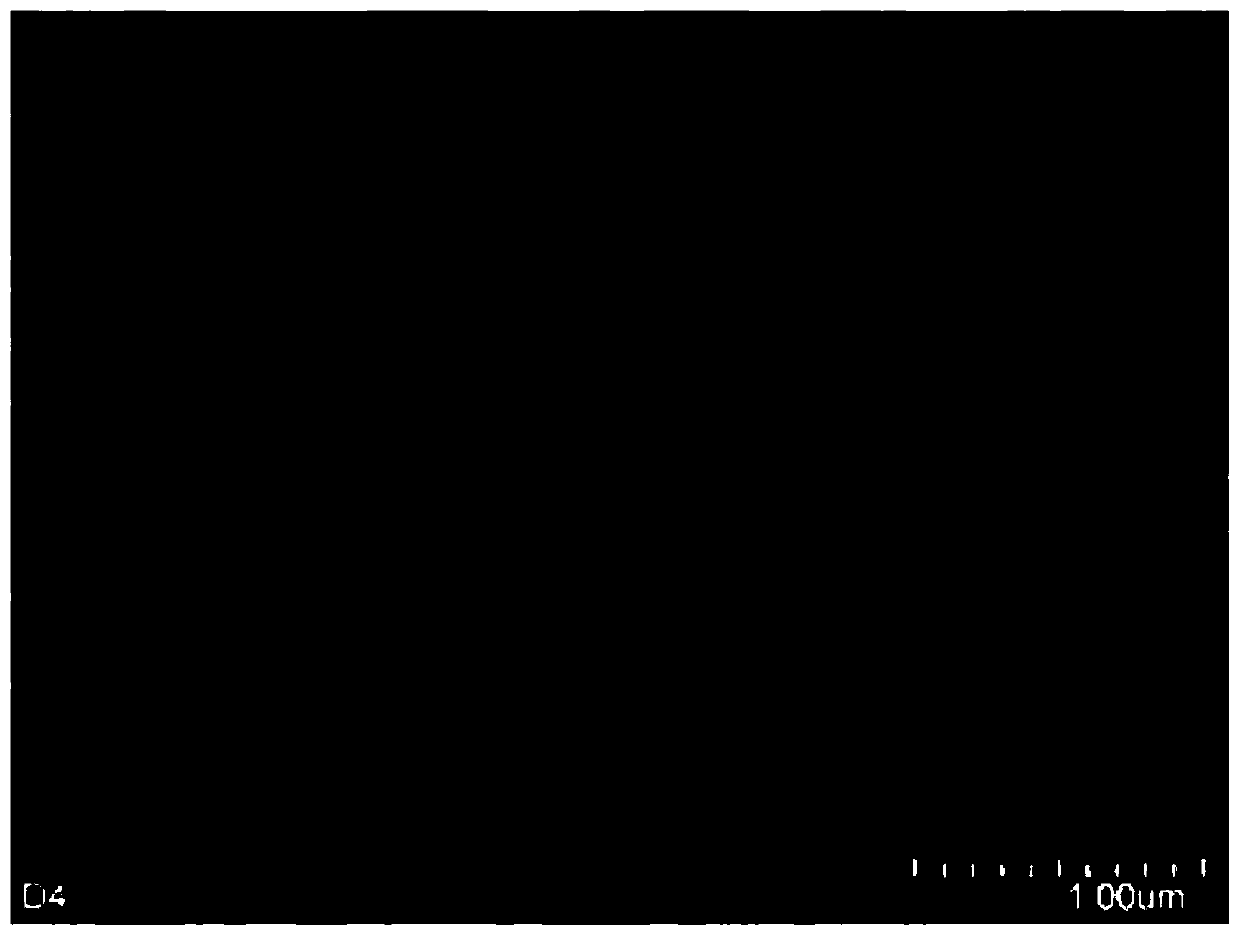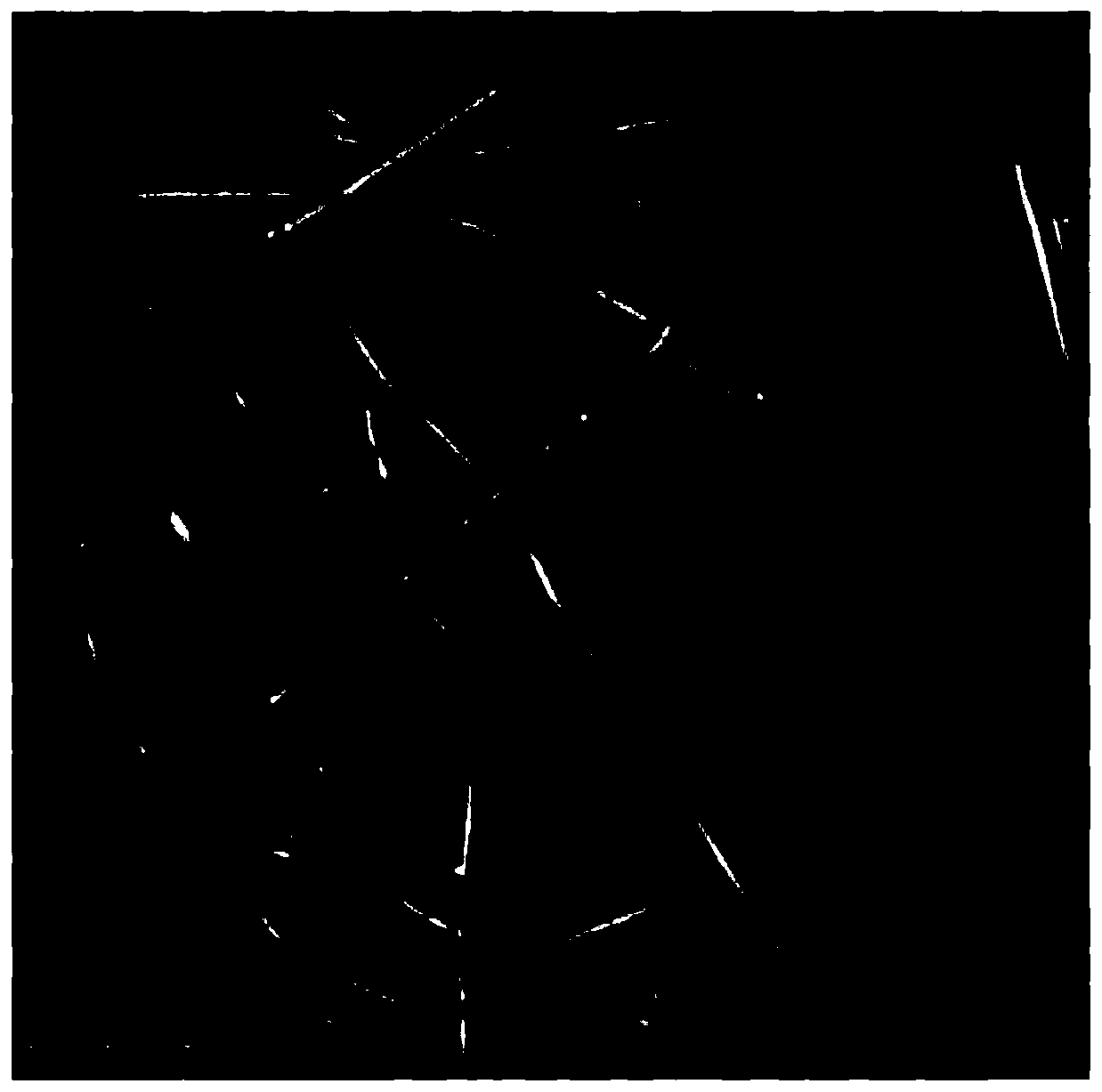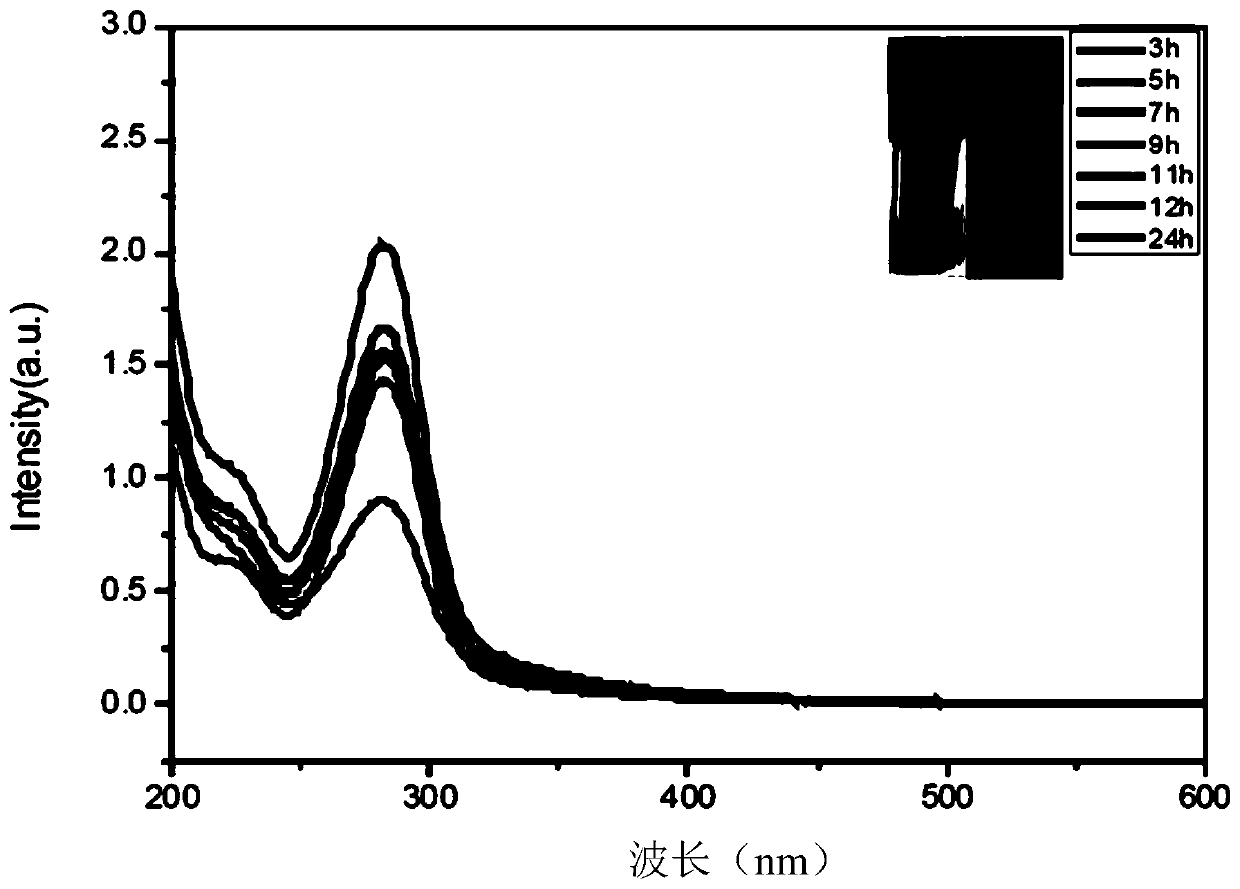Preparation method of carbon dot-porous inorganic oxide composite nanofiber
A technology of composite nanofibers and inorganic oxides, applied in chemical instruments and methods, fiber chemical characteristics, textiles and papermaking, etc., can solve the problems of fluorescence intensity reduction, agglomeration, and limit the application of carbon quantum dots, etc., to achieve simple and convenient operation, The effect of high yield
- Summary
- Abstract
- Description
- Claims
- Application Information
AI Technical Summary
Problems solved by technology
Method used
Image
Examples
preparation example Construction
[0021] The invention provides a method for preparing carbon dot-porous inorganic oxide composite nanofibers, including: preparing a mixed solution of high molecular polymer, chitosan and inorganic oxide to obtain a spinning solution; using the spinning solution Electrospinning is performed to obtain composite nanofibers; the composite nanofibers are calcined to obtain porous inorganic oxide composite nanofibers; the carbon precursor powder and the porous inorganic oxide composite nanofibers are added to water, and water is carried out in the reactor. Thermal response.
[0022] In one of the embodiments, the process of preparing the above spinning solution includes: separately preparing chitosan solution, high molecular polymer solution and inorganic oxide solution, adding the inorganic oxide solution to the chitosan solution, and stirring uniformly to obtain Mix the solution, and then add the above-mentioned mixed solution to the high-molecular polymer solution, stir evenly, and ...
Embodiment 1
[0034] (1) Weigh a certain amount of nylon (PA) and dissolve it in formic acid, stir at room temperature for 5 hours until it is completely dissolved, and add a certain amount of chitosan (CS, molecular weight 100,000) powder to make the volume of PA and CS The ratio is 70:30;
[0035] (2) Mix absolute ethanol, tetraethyl silicate (TEOS), and hydrochloric acid, stir at a constant speed until complete hydrolysis, add to step (1) and continue to stir until complete mixing, then stand still to remove bubbles to obtain a spinning solution;
[0036] (3) Inject the spinning solution into a 20mL syringe (needle size 17G) and fix it on the electrospinning device. The fixed static voltage is 25KV, the liquid supply rate is 1mL / h, and the pole pitch is 20cm. Electrospinning is performed. Obtain composite nanofibers. Dry it. The above-mentioned fibers are calcined in a muffle furnace at 650°C for 4 hours to obtain mesoporous silica composite nanofibers.
[0037] (4) Mix 1g of corn stalk powd...
Embodiment 2
[0039] (1) Dissolve a certain amount of chitosan (molecular weight 100,000) in a 2% concentration of acetic acid aqueous solution, and stir at room temperature for 2 hours to completely dissolve;
[0040] (2) Weigh a certain amount of polyvinyl alcohol (PVA) and dissolve it in water, stir at 90°C for 6 hours until it is completely dissolved. The volume ratio of PVA to CS is 90:10;
[0041] (3) Mix absolute ethanol, tetraethyl silicate (TEOS), and hydrochloric acid, stir at a constant speed until complete hydrolysis, add to step (1) and continue stirring until completely mixed, then add to step (2) until completely mixed , Let stand to remove air bubbles to obtain electrostatic spinning solution;
[0042] (4) Inject the electrospinning solution into a 20mL syringe (needle size 17G) and fix it on the electrospinning device. The fixed static voltage is 25KV, the liquid supply rate is 0.8mL / h, and the pole pitch is 15cm for electrospinning. , Get the composite nanofiber. Dry it. Put t...
PUM
| Property | Measurement | Unit |
|---|---|---|
| diameter | aaaaa | aaaaa |
Abstract
Description
Claims
Application Information
 Login to View More
Login to View More - Generate Ideas
- Intellectual Property
- Life Sciences
- Materials
- Tech Scout
- Unparalleled Data Quality
- Higher Quality Content
- 60% Fewer Hallucinations
Browse by: Latest US Patents, China's latest patents, Technical Efficacy Thesaurus, Application Domain, Technology Topic, Popular Technical Reports.
© 2025 PatSnap. All rights reserved.Legal|Privacy policy|Modern Slavery Act Transparency Statement|Sitemap|About US| Contact US: help@patsnap.com



